This week, we took a short tour of the palace of Valencia’s autonomous regional government (el Palau de la Generalitat), which is the large building adjacent to the Plaza de la Virgen.
Construction on the palace began over 500 years ago, in 1421, when it was built as a headquarters for the representatives of the Kingdom of Valencia. The site was chosen for its prime location on Calle de los Caballeros and close proximity to the Cathedral. In its centuries as the center of their government, the palace has become an emblematic building for the people of the Valencian Community.
In the 15th Century, the palace was a modestly-sized structure, but it has been expanded and restored multiple times over, resulting in a large, conspicuous building with a complex mix of architectural styles. There are three main floors, with two towers on either side of the building; one looking out towards the Plaza de la Virgen, and the other to Plaza Manises. Today, the palace serves as the seat for the President of the Valencian Community (currently this guy). But even though important business is conducted there every day, it’s possible to take a free tour. You just have to set it up in advance… instructions follow at the end of the post.
The public entrance to the palace is from Plaza Manises, but this is not where the tour starts. Still, it’s worth peaking in, to see the atrium and the statue of a Ballestero del Centenar de la Ploma — a royal order of 100 soldiers founded in 1365, whose sole purpose was to guard the Valencian flag.
The palace tour, though, starts from the main entrance at C/ Caballeros 2. After going through the door, you’ll find yourself in an impressive Gothic courtyard, with ancient staircases on either side and a bronze sculpture of Dante’s Inferno by Mario Benlliure. This is the oldest part of the building, and it’s easy to imagine Valencia’s kings strolling through with their courts.
More information, images and a video below:
We had a chance to see a few different rooms in the palace, each one amazing. They all boasted incredible ceilings and artwork, as well as an overbearing sense of importance — one room is still used for private meetings between people like, oh, the Pope, and another had an original tiled floor dating from 1500-something. Amazing.
One of my favorite sections was a long hallway called the Salon de los Reyes (Salon of the Kings). Lined with portraits of every Valencian king, the salon ends with a large altar and a stunning painting by Sorolla of the crucifixion.
But the highlight is the Sala Nova, which ended the tour. Two massive chandeliers hang in the center of this room, and every wall is covered in huge portraits of groups of important people. There’s also an upper balcony running around the room, made of dark and intricately detailed wood.
Many times over in the palace, you’ll see an emblem comprised of three scenes: Saint George slaying the dragon on the left, Maria and child in the center, and the seal of the Valencian Community on the right. These represent the government’s most important duties: military, religious and civic.
As mentioned, visits to the palace must be arranged in advance, and are most likely only available in Spanish. We were able to join a group of school kids the day after we called. The number for arranging visits is 963 863 461, but again, be advised that you’ll have to speak Spanish.
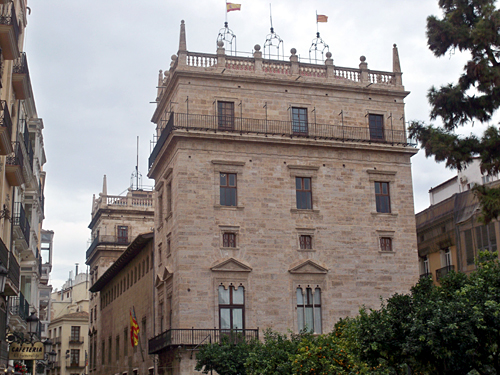
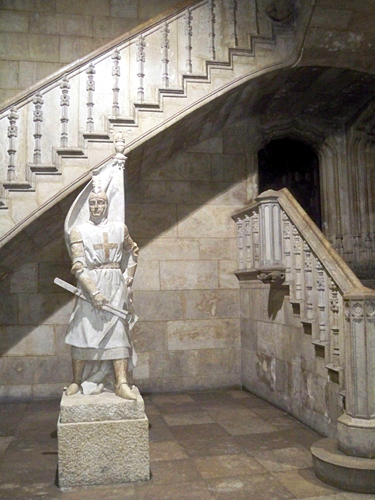

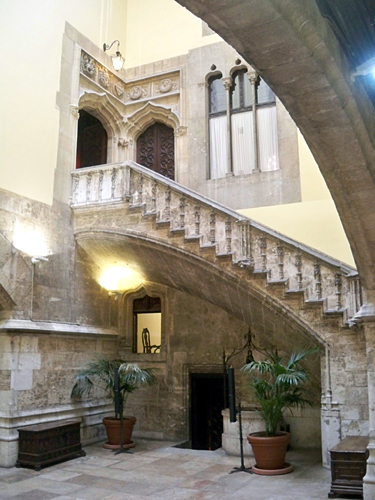
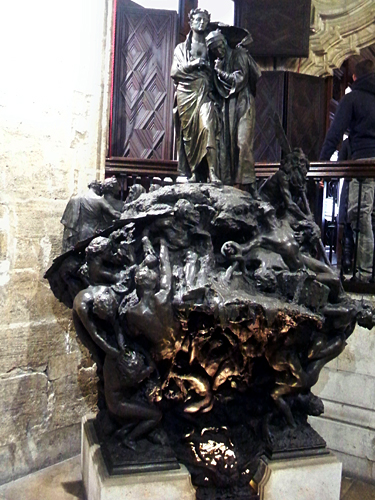

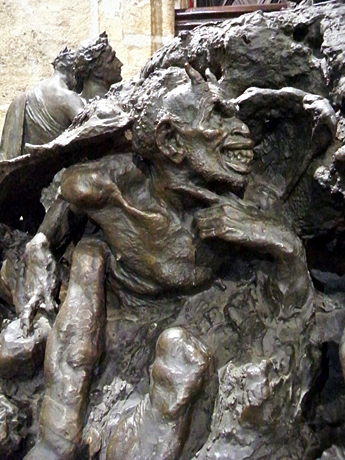
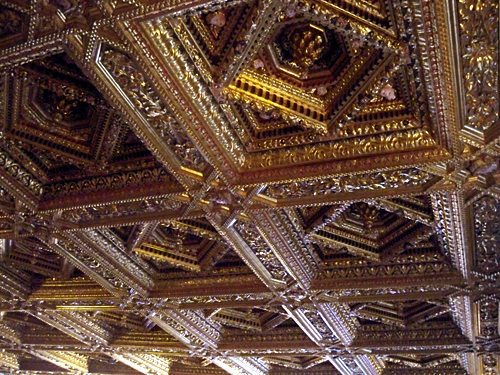
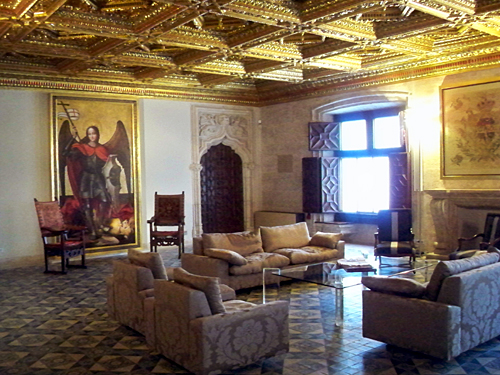

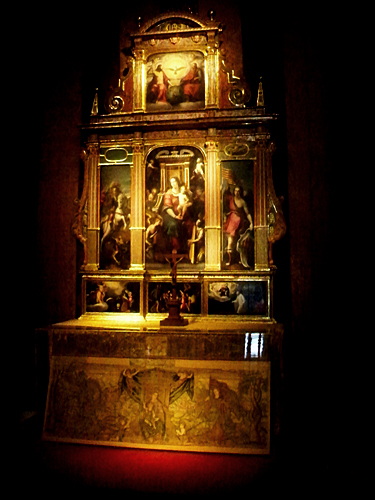
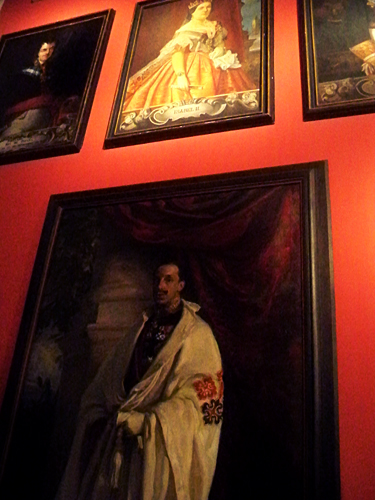
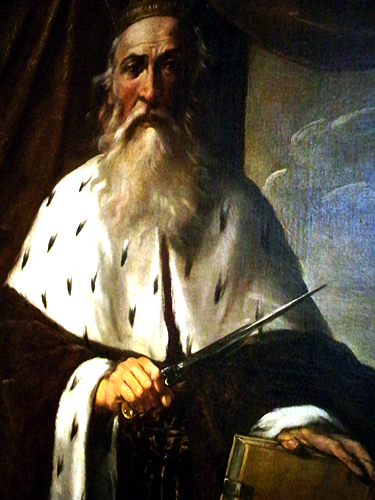
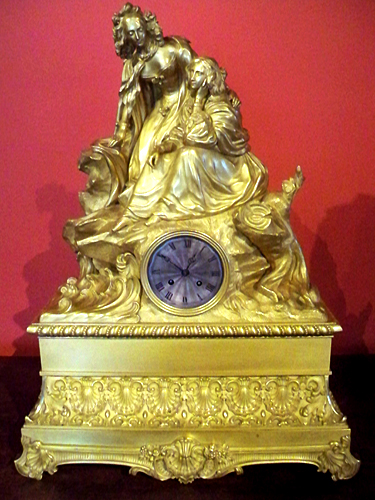
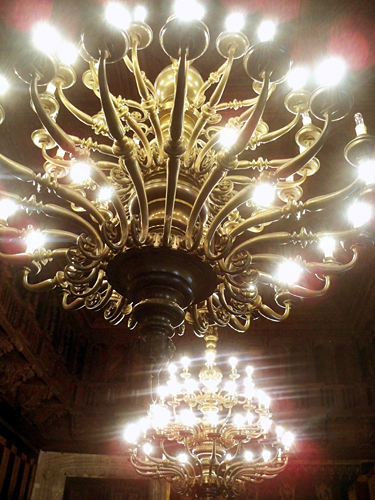
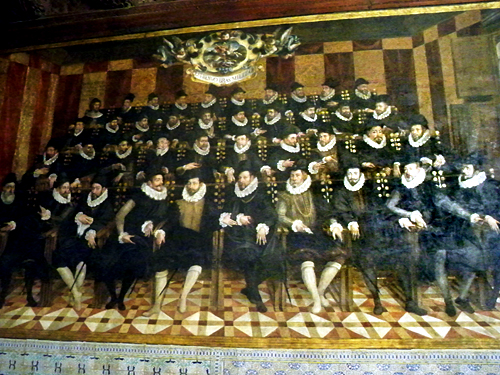
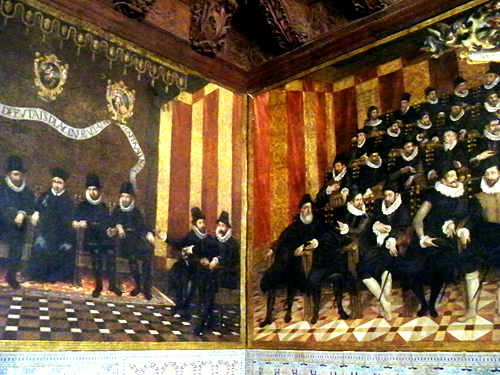
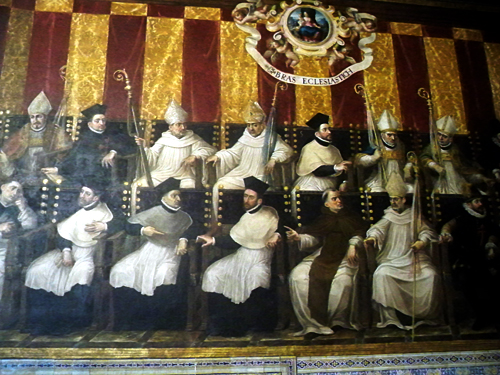
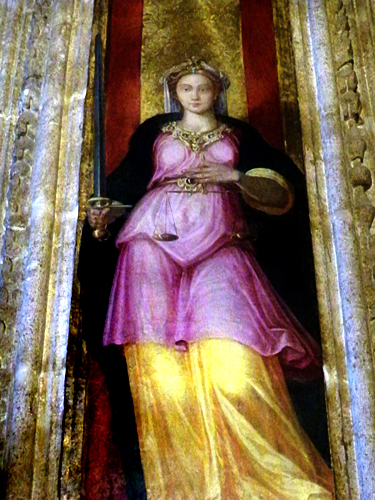
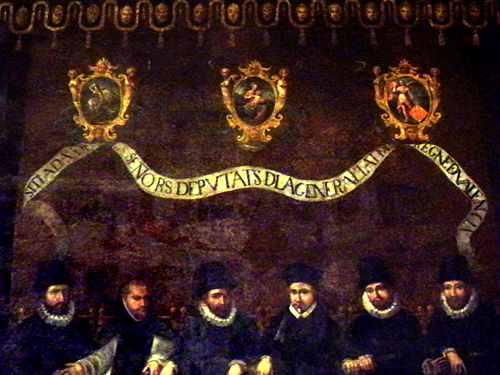
Pingback: “My Spain – New and Old” Part Two: Old – Valencia’s Ciutat Vella | Caroline Angus Baker